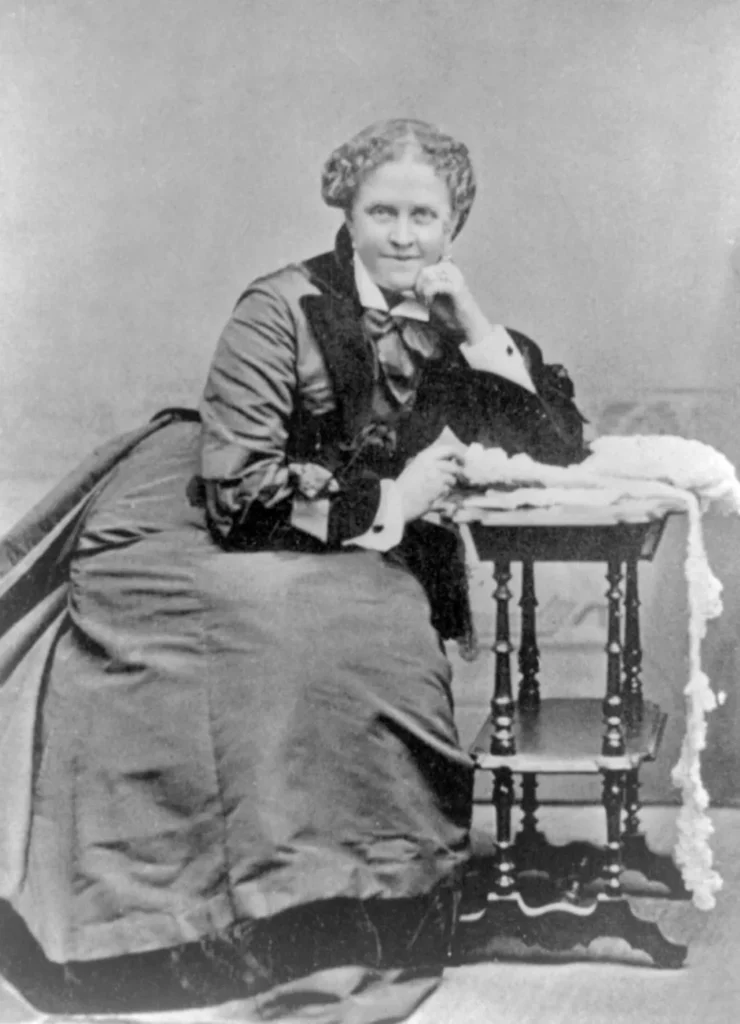
The Column of Lasting Insignificance: December 6, 2008
A century ago, the best-selling book Ramona brought hundreds of thousands of visitors to Southern California seeking to bring characters and locations to life. The novel, which told the story of a part-Scottish and part-Native American orphan girl who suffered hardship and racial discrimination before — barely out of her teens — her marriage came to a tragic end. The tale was originally serialized in a weekly Christian paper and as a book it was reprinted over and over again, was filmed five different times and, by romanticizing Mexican colonial life, gave the region a unique cultural identity. It is celebrated annually with the Ramona Pageant at Hemet.
Pouring in to explore California on the new railroads which opened up the West just before the 20th century, eager visitors were already equipped with a ready-made guidebook. In a manner often duplicated today, they took a best-selling work of fiction as literal truth and sought to track down the people and places therein that had captured their imagination.
“Little, plump, fair-skinned, blue-eyed Helen Hunt Jackson,” wrote Carey McWilliams, “was almost solely responsible for the evocation of the Mission past, and it was she who catapulted the lowly Digger Indian of Southern California into the empyrean.”

Mrs. Jackson (1830-85), wife of a wealthy banker and railroad executive, had originally arrived in California on assignment from Century magazine to write about the missions with which she was “deliciously enamored,” said McWilliams. “(They were) then in a state of general disrepair and neglect,” he wrote in Southern California: Island on the Land, “infested with countless swallows and pigeons, overrun by sheep and goats and occasionally inhabited by stray dogs and wandering Indians.”
In 1881, Harpers published Mrs. Jackson’s A Century of Dishonor which was popular but, so far as she was concerned, did not make people sufficiently aware of the plight of the Indians even though she had sent a copy at her own expense to every member of Congress. On the cover was a quote from Benjamin Franklin: “Look upon your hands! They are stained with the blood of your relations.”
It was two years later, on hearing about the murder of a poor peasant named Juan Diego, a few miles from today’s Ramona Bowl in the Cahuilla Mountains outside Hemet that she found the basis for her novel, Ramona.
“What I wanted to do,” she said, “was to draw a picture so winning and alluring…that the reader would become thoroughly interested in the characters before he dreamed what was before him — and would have swallowed a big dose of the Indian Question without knowing it.” She called Ramona’s husband, Alessandro.
Historian Phil Brigandi says that Jackson absorbed into her tale real incidents at Temecula, San Pasqual, and the Los Coyotes Indian Reservation, and she wrote about San Diego, San Luis Rey, San Bernardino, and San Gabriel. “So her wide-ranging novel gave many communities a chance to stake their claim to be part of the Ramona myth.”
In fact, so many places tried to cash in on the growing tourist interest that George Wharton James, for his 1907 book, Through Ramona Country, retraced Mrs. Jackson’s steps. The legend, he said, was like a mosaic of fact rearranged to make a whole new picture.
But Hemet (pop. 66,000) has probably the strongest justification for its claim to the Ramona legend. Today, as much larger towns, both Hemet and neighboring San Jacinto house many commuters heading daily to jobs in San Diego or Orange County.

The Ramona Pageant is staged every spring in the hills south of town. “With an artist’s vision and a writer’s passion for justice,” the brochure declares, “ a rocky hillside in a remote valley gave birth to Ramona in 1923.”
It was adapted by playwright Garnet Holme (1873-1929) from the dramatization that had been performed at the Mason Opera house in Los Angeles in February 1905. British-born Garnet, a former touring Shakespeare actor turned director, produced shows throughout California after immigrating in 1903. He staged them at missions and at Yosemite, thereby earning the title of Pageant Master of the National Parks. One of his productions, at Coronado, ingeniously took advantage of a solar eclipse. His original plan was to stage Ramona on the athletic fields of the local high school.
Hemet Chamber of Commerce was persuaded to buy 160 acres of land in and around a nearby canyon and the land was cleared for the amphitheatre. For the first few years, there was no road, playgoers hiking up a rough trail, carrying blankets and cushions to sit on the rocky ground. Seating was added year by year, finally reaching the current capacity of 5,000. It wasn’t until the installation of a sound system in 1965 that performers could supplement the natural acoustics with microphones.
More than a million visitors have so far seen what one observer calls “America’s passion play” which took place this year on three weekends in April and May, tickets $30 (locals: $16), and a barbeque lunch offered for an extra $13.50. Earlier shows in the Ramona Bowl this season have been My Fair Lady and Shakespeare’s The Tempest. Charles Dickens’ A Christmas Carol will be staged next week.

Trains stopped running to Hemet in 1968 and the town’s history museum, in the old 1898 Santa Fe depot of the Aitchison & Topeka railroad, is now the town’s history museum, restored with the help of some of Thomas Kinkade’s huge art winnings. Exhibits explain the town’s “story of water” which began with the huge dam built by Lake Hemet Water Company in 1895.
Kinkade was at the Depot last weekend, signing $295 prints of his Florida Avenue at Dusk, Hemet 1915 which he painted in 1986 after visiting his father-in-law, Al Willey.
Paul Bailey, who calls himself a “museum geek” runs the Western Center for Archaeology and Paleontology which has a theater that “shakes, rattles, and rolls as the giants of the Ice Age come to life,” as Jenna Hunt wrote colorfully in the Valley Chronicle. The museum displays the fossils found when Diamond Valley Lake was constructed as Southern California’s biggest reservoir. (It allows un-powered boats and fishing, but no swimming “or body contact”.)
For twenty bucks a year, the local Valley Chronicle offers free classifieds all year and restaurant discounts. The paper’s editorial last week clucked about how the “three old boys”… who had “together been on the council for 30 years” had reappointed some non-resident to the Planning Commission. Budget cuts, as everywhere, were being discussed and one letter writer suggested that rather than having to lose valuable firemen and police why doesn’t “the new City Council vote to forego some of those perks that previous councils have voted for themselves…”

Hemet’s new fire chief Matt Shobert from Arizona introduced the concept of mothers being able to drop off their ‘unwanted’ babies at the fire station from which they’ll be transferred to a care agency with a grace period allowed for mothers to have second thoughts.
City manager Len Wood told the Council last month that Hemet would need an extra $6 million next year “if things don’t get worse — and they probably will.” Almost half of the city’s sales tax revenue had previously come from now-declining automobile sales. He was asking all departments to cut 20% from their budgets. But development was continuing, “if not at the rate of the past. The city of Hemet will ultimately recover and even thrive.”
Long-term continued growth…affordable housing… healthy job creation has been predicted for the region by the Public Policy Report for California for 2015, calling the area “economically vibrant.” Population was expected to continue to expand from 232,000 to 361,000. “Growth in the young adult population is expected to be particularly strong… (residents in their) twenties and thirties.”
{ Part Two of The Quest for Ramona will appear next week }
